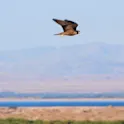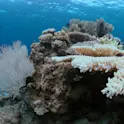
Featured news
23 Oct 2023
Do people everywhere care less about their cats than their dogs?
by Angharad Brewer Gillham, Frontiers science writer Image/Shutterstock.com Previous studies have suggested that owners care more about dogs than cats — maybe because dogs are generally considered more affectionate and require more hands-on care. But these studies have used convenience samples and are only based in one country. Scientists surveyed representative samples from Denmark, Austria, and the UK, and found that people generally invest more emotionally and financially in their dogs than their cats, but that the difference is biggest in Denmark and smallest in the UK. This suggests that there is no universal preference for dogs based on their behavior. Do canines get more care? Some studies have suggested pet owners are less emotionally attached to and less willing to finance care for cats than dogs, possibly because of cats’ behavior: cats may be perceived as caring less about humans and needing less care in return. But these studies are often conducted on non-representative samples and don’t consider possible cultural differences in attitudes to pets. A team of scientists led by Dr Peter Sandøe of the University of Copenhagen decided to investigate further. “We and others have found that people are willing to spend much less on their cats […]













